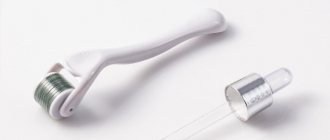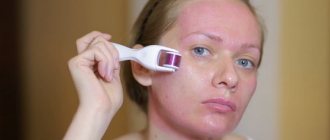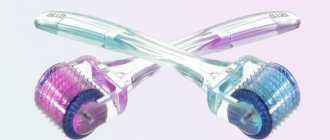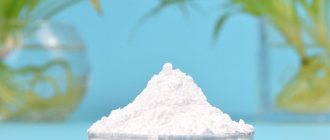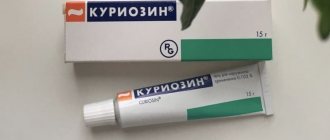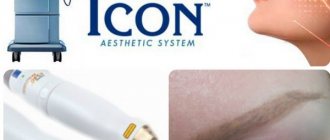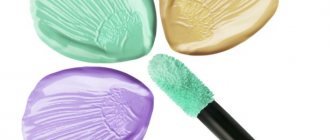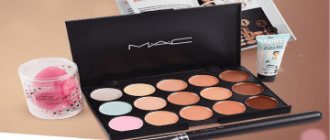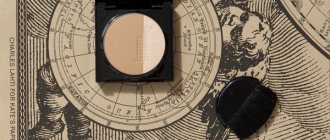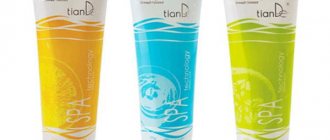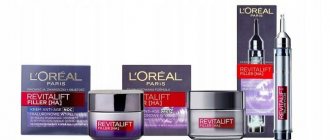Photo from the site: CosmeticTrends.ru
The condition of your skin, or at least the appearance of how healthy it looks, plays a huge role in your overall appearance. An even tone and uniform relief, beautiful color and the absence of problem areas, pimples, wrinkles, irritation and even freckles, all this helps to look perfect, but not many people are naturally endowed with such wonderful dermis. Most often, there are problems with the skin, spoiling the appearance and giving an unkempt and careless appearance, which many girls and women dream of getting rid of. In order to make your skin perfect, you will have to put in a lot of effort, but it is not a fact that you will be able to do this at all, but a face corrector palette will help you quite successfully disguise flaws and imperfections, and we will tell you how to use it in our article.
Content
- Why do you need an eyeshadow palette?
- Types of palettes
- How to choose an eyeshadow palette for blue eyes
- How to choose an eyeshadow palette for green eyes
- How to choose an eyeshadow palette for brown eyes
- The best eyeshadow palettes: rating, top 3
- Nude makeup palettes
- Colored makeup palettes
- Combined palettes with different finishes
- How to use an eyeshadow palette
- Step 1. Preparation
- Step 2. Base
- Step 3: Shadows
- Step 4. Eyeliner and mascara
- Results
Manufacturing methods
For mathematical calculations of the area of complex figures, it is correct to use a factory set. In the instructions from the manufacturer, a student can find the following information: what a math palette is needed for, what materials it is made of, and how to use it. Externally, the model looks like a transparent plate or film with a checkered line.
Taking into account the parameters of the figure whose area needs to be found, the sample is divided into square millimeters, centimeters, and decimeters. Some companies produce similar tools with a magnetic base. The choice depends on the child’s preferences and the conditions of the task.
But you can make a palette using mathematics with your own hands.
To do this you will need the following materials:
- checkered sheet;
- pencil;
- scotch;
- ruler.
If you have to work with small quantities, it is recommended to use graph paper. Externally, a homemade palette is similar to a factory one - it is lined up with cells on a flexible sheet designed for finding the areas of irregular and regular shapes, as well as performing other exercises.
A self-made template will cost less than a factory one.
In addition to the materials listed, you will need a transparent, thick polyethylene cover for a diary or notebook. You need to measure it and draw it with a pen into squares with sides of 1 cm. This template will have dimensions of 10x10 cm. If graph paper is used for production, it is recommended to paste it with tape on top, re-drawing the cells. In this way, the life of the tool is extended and it is additionally protected from moisture.
To make a palette of 100 square meters. cm, you will need to adhere to the following algorithm:
- A diagram of the tool is displayed on a checkered sheet.
- A cover is placed on the palette.
- The cells are circled correctly. To make the tool look neat, use a ruler.
- The finished template is cut out.
How to choose an eyeshadow palette for green eyes
For green-eyed girls, a nude eyeshadow palette with shades of purple, lavender and wine is suitable.
LID LINGERIE SHADOW PALETTE 01 SHADOW PALETTE 331 reviews
What is concealer used for?
Concealer is a tool that can be used to hide imperfections on the skin of the face: unevenness, spots, bruises, pimples, damage and other flaws that spoil its appearance. The choice and correct use of this product is very important, because it helps a girl keep her skin in order.
The name of the concealer comes from the English word conceal - to hide. This is precisely the function of the tool. It is often confused with concealer: these cosmetics are indeed very similar and are often interchangeable.
But there are several subtle differences: the concealer has a lighter structure and is applied to large areas of the face, while the corrector is thicker and is used to disguise small spot defects.
Beauty brands themselves often do not differentiate between correctors and concealers: you can understand the nature of a product only by looking at how it looks on the skin. These cosmetics are produced in a variety of forms, including:
- Concealer stick. It is used to eliminate small defects when the greatest precision is important when applying the product, for example, when masking individual freckles, small pimples and spots, light moles. It can also be used to contour the eyes or lips instead of a regular pencil for lining. Many of these products have useful bactericidal properties, which help not only mask imperfections, but also combat them.
Concealer stick. Used for dry or normal skin; not suitable for those with oily skin, as it clogs pores. Used to conceal color imperfections on the face such as redness, freckles or scars and can be applied over very large areas of the skin but is difficult to blend out. It is not suitable for dealing with bumps or large blackheads and often only worsens their appearance.- Dry concealer, also known as powder concealer. Excellent for oily skin, as it neutralizes sebaceous shine and gives the face a matte appearance. Covers blemishes and pimples, but is not suitable for use around the eyes as it makes lines and wrinkles more visible.
- Liquid concealer is the lightest type in its structure, suitable for almost any skin except very dry skin. It perfectly masks wrinkles, is suitable for cosmetic treatment of the area around the eyes and practically does not clog pores, and can also be applied to almost the entire face like a foundation.
- Concealer cream. The most universal type of product. It has a dense structure, so it helps well in hiding dark spots, wrinkles and other noticeable defects. Often, concealer creams are produced not as single products, but in the form of sets with different colors - this includes, for example, the fairly well-known poppy palette (MAC Professional MakeUp).
Step-by-step application instructions
Using a concealer palette to hide imperfections, as well as sculpt and contour, is not as difficult as it might seem. In many ways, the techniques that are most suitable for an individual girl depend on the shape of the face and skin type. The simplest camouflage base, suitable for light daytime makeup, is done like this:
Read also: What does the bast ligament mean?
- Apply moisturizer to a face that has been washed and free of traces of past makeup.
- Spread the foundation evenly over your face. If it is very dense, then you should not apply it to the area around the eyes and problem areas, limiting yourself to only concealer in these places.
- Apply concealer to the area under the eyes, drawing an inverted triangle with the base at the lower eyelid and the tip at the cheek. It’s good to blend it as close to the eyelashes as possible, right under the eyelids. Don't forget about the inner corners of your eyes as well.
- Apply a thin layer of concealer to minor imperfections such as pimples, blemishes and scars. If necessary, use the desired shades of corrector in several layers, then blend thoroughly.
- Remove excess concealer with a dry cloth, then apply loose or compact powder to your face.
This simple makeup will give your face freshness, even out its color and allow you to conveniently apply eye shadow, blush and lipstick.
To disguise very noticeable defects, you can turn to a professional makeup artist, but a girl with any level of skill in using cosmetics can benefit from concealers in everyday life.
Features of highlighting
Often, when tone has already been applied to the face and light and shade has been created using contouring, it looks too matte, it lacks the colors of life and natural healthy volume. Lightly highlighting just a few areas on the face can instantly refresh the makeup, making it harmonious and natural.
If we talk about how fashionable it is, then the use of highlighter has been relevant for many seasons in a row. If you pay attention to fashion shows and photos of models, you will notice that sometimes makeup artists apply highlighter to the entire face. For everyday life, this option is too radical, and under no circumstances should it be used.
Remember that you should never use highlighter to highlight areas that you usually hide. For example, if you have a diamond-shaped face, then highlighting the upper cheekbones will only make the situation worse.
Highlighter can be applied:
- pointwise to the bridge of the nose;
- from above to the area of the upper lip;
- in moderate quantities to the center of the chin.
For high-quality makeup, you need to choose the right highlighter. If you have an oily skin type, but want to naturally highlight your face, choose a good dry or crumbly composition.
For useful tips on applying highlighter, watch the video:
Textures
One of the most important steps to understanding how to apply facial concealers is the composition of the cosmetics. Having a good understanding of this topic, you will be able to choose the right product for your skin type, and then your makeup will lie smoothly and harmoniously.
Liquid
The form of this product is similar to a light fluid or foundation. It is ideal for dry and normal epidermis types. It can often provide additional hydration. Due to its texture, it blends out perfectly. It is best to use a sponge or a thick brush with it.
Creamy
In operation, it can be compared to a body butter or cream shadows. It adheres very well to the skin, but is quite difficult to blend. Girls with increased secretion of subcutaneous fat are better off avoiding cosmetics with this structure: it can impart an inappropriate oily sheen.
Dry
To produce this product, pure pigment is pressed with mineral binders. The result is something like powder. It is best used by girls with dry and normal type of epidermis. The crumbly product lays down in a light layer and looks quite natural.
Secrets of makeup artists
Using the tricks of professionals, you can significantly transform your appearance.
To ensure that the concealer is invisible in the area under the eyes, it should be applied in the shape of an inverted triangle with a special brush or fingers, while carefully blending. The corrector can be used instead of an eyeshadow base
A color slightly lighter than the skin is selected and applied in a thin layer to the eyelid; you can even apply it to the sub-brow area, adjusting the shape of the eyebrows. By drawing a line close to the lips with the corrector, you can visually enlarge them, and also preserve the pigment of the lipstick or the shine of the gloss for a long time. When it comes to evening makeup, then you should pay special attention to yellow concealer; it will give the skin a slight glow and an even tone. If suddenly the layer of product turns out to be too thick, then just gently blot off the excess with a dry cloth. Concealer helps to correct the shape of the eyebrows; to do this, you need to choose a product that is a tone lighter than your skin and carefully apply it above and below the eyebrow arch, and then carefully shade it. To contour your face, you need to choose a concealer that is two shades lighter and two shades darker, then, preferably in a room with natural light, you need to apply a light concealer to areas that catch natural light and a dark concealer to areas where there are light shadows. Many girls, when designing arrows before their eyes, have to deal with the problem of curved lines, often this ends with complete removal of the arrows and repeating the art again, but this can be avoided with the help of a proofreader; if they notice an error, it is masked, as if an eraser is erasing a simple pencil from paper. If there are unsightly pimples on the chest and décolleté, you can hide them. A concealer that matches the skin tone is applied, and translucent powder is applied on top, and so on in several layers until the imperfections are hidden from view. By choosing concealers with vitamin E, you can help dry skin become hydrated and healthy.
Chromatic circle in makeup: secrets of color selection
Color correction is based on the principle of color neutralization, and without understanding it, using a palette of face correctors correctly will not be easy. In the chromatic circle, all colors of the visible spectrum have an opposing color opposite them. For example, opposite blue is orange, and opposite red is green. When these shades are superimposed on each other, they are neutralized, and in order to disguise a defect, you just need to determine its color.
The standard corrector palette includes the following shades:
- green;
- lilac;
- blue;
- yellow;
- orange;
- pink;
- peach;
- white;
- beige;
- brown.
If the set is large, then it contains several shades of each color of varying saturation. The rule that works here is that the more intensely colored the defect, the richer the shade needed to camouflage it. Depending on the nature of the problem, different color combinations will be useful to you.
Green
The most popular among owners of oily and combination skin, as it fights the main manifestations of inflammatory reactions. Its use is justified in the following cases:
- red inflammatory spots;
- redness around pustules (pimples);
- burst blood vessels;
- insect bites;
- fresh scratches.
Dark-skinned and snow-white
Keep in mind that the darker the natural shade of your skin, the richer the color of the corrector you will need. Pale green will help disguise redness on fair skin, while dark-skinned girls are better off using an olive or mustard tone. Do not ignore this rule, since using a palette of correctors for the face without taking into account skin color is unacceptable.
Yellow
This color is useful for neutralizing the blue-violet tones, the manifestations of which often affect girls with thin skin and superficially located blood vessels. Feel free to apply yellow concealer to the following areas:
- blue and purple circles under the eyes;
- translucent venous network;
- rosacea;
- fresh hematomas.
Keep in mind that applying a yellow tone to undamaged areas is unacceptable, as it will give the face an unhealthy yellowness. When applying the corrector, do not slightly reach the edge of the defect, because during shading the yellowness will spread slightly to the sides and cover the entire problem area. This is a universal norm that works for all colors, and without following it, it will not be possible to correctly apply a palette of correctors to your face.
Lilac
Looking at the chromatic circle, it is not difficult to guess that the lilac-lilac-violet range is intended to hide the shortcomings of yellow-orange and brown shades. Feel free to apply lilac to the following imperfections:
- age spots, melasma;
- freckles;
- uneven tan;
- old icteric hematomas.
This corrector is most in demand among women of the older age group who are faced with the problem of photoaging. The pigmentation accompanying it forces the use of a palette of correctors for the face in lilac shades.
Makeup gadgets
The Beauty Blender is the perfect sponge for applying and blending cosmetics. Its pointed edge will reach the most difficult areas in the corners of the eyes and near the nose, while the opposite wide part will quickly cope with large areas. Don't forget to wet it before use so that your makeup comes out subtle and weightless.
Pink
Not the most used color, since its opponent is shades of green, which are an infrequent guest on the face. The pink corrector is used locally only at the appropriate stage of hematoma involution. But it finds diffuse application more often.
Girls whose whole face has a pale, greenish or earthy tint should not apply the corrector over the entire surface, because this may give too dense coverage without the possibility of blending. In this case, a little life hack will come to the rescue: mix a little of your usual foundation or makeup base with a pink liquid corrector. The resulting mixture can be used to cover the entire face.
White and beige
These colors are universal and are often used by beginners to camouflage all types of skin imperfections. But classic makeup with a palette of face correctors implies their use only for highlighting and darkening individual areas of the face using the contouring or sculpting technique.
